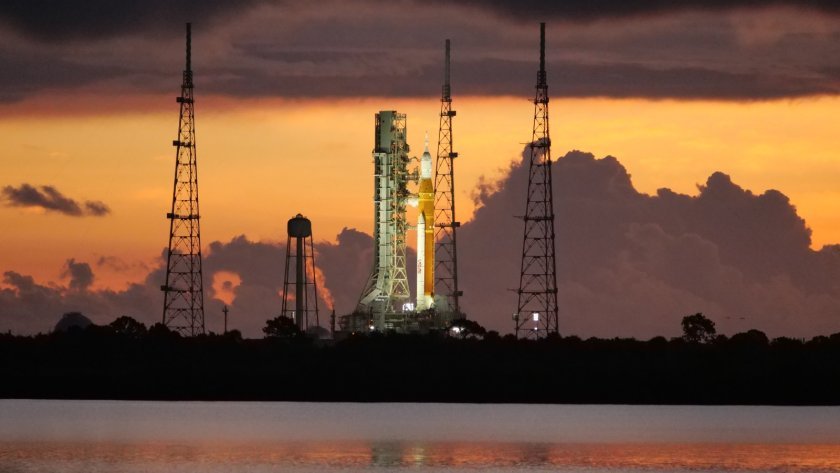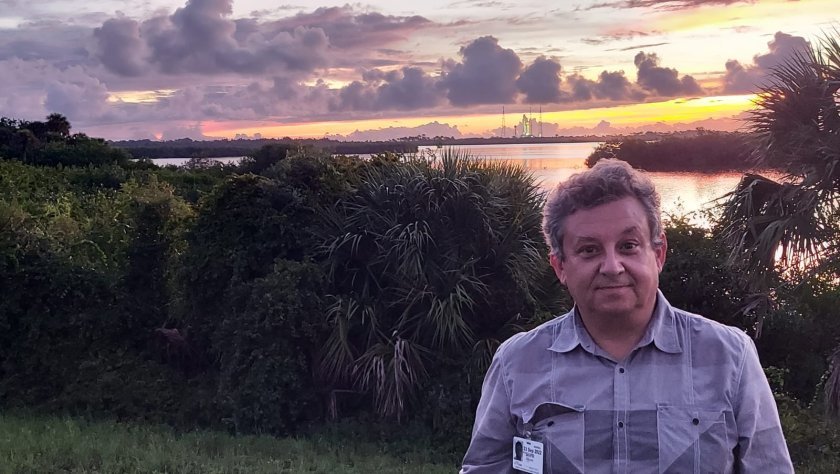Sunday marked the finale of an exciting journey - NASA's Artemis I mission, whose big goal was returning humans to the moon. The launch was on November 16 - that's when the largest rocket ever created by mankind, the SLS, was launched, bringing up the Orion capsule.
The Artemis 1 Orion spacecraft successfully splashed down in the Pacific Ocean near San Diego on Sunday, December 11, after a 25-day mission that took it into lunar orbit
The mission also involved a Bulgarian team, led by Dr. Petko Dinev, who made the cameras that filmed the rocket's launch.
After 25 days and 10 hours in space, 2 million kilometres travelled and a flight to the moon and back, Orion is returning home. On the 13th day of the flight, the capsule set a record by reaching the farthest point ever reached by a manned vehicle - 432,000 kilometres from Earth. Twenty years of hard work on the programme are behind this success.
"It was very exciting because this is the first NASA rocket to launch from Cape Canaveral to the moon in 50 years. Our cameras that were up on the rocket had to monitor the separation of the stages, the two side boosters, the main stage and the release of the capsule. They did a very good job, because we saw a piece of the rocket coming off on one of the clips. Now, I assume that NASA colleagues will be looking at the information from those cameras and seeing what happened. It is very possible that it was just a piece of ice, because with this big difference in the temperature of the fuel and the atmosphere, it is possible that a piece of ice separated from the rocket, but it is also possible that it was something else," Dr Petko Dinev told BNT.
The previous Apollo mission was in 1972. But now the ambitions are much bigger.
"The Artemis programme is a long-term NASA programme that involves many flights, creating an orbiter to revolve around the Moon. It's - imagine - a space station that doesn't revolve around the Earth, but around the Moon. The idea is to set up a base on the moon where people can work, and the main objective is to launch rockets from the moon to go to Mars.
The reason is that only if a rocket were launched to Mars from the Moon, where gravity is 6 times lower than on Earth, would the fuel in the rocket be enough for a round trip with the current technology available to mankind.
Everything is going according to plan so far in the Artemis I mission, but one of the riskiest elements remains - the drive into the Pacific on Sunday. The flight is a test, and its purpose is to check how to carry out the same mission, but with humans. The capsule has dummies of three astronauts fitted with numerous sensors that will record the data from the indicators during the landing and that data will be analyzed.
"The angle at which the capsule enters the dense layers of the atmosphere is very important, because if this angle is different from previously calculated, then the capsule could overheat and literally the people inside could die," says Dr Dinev.

The most exciting moment for him was when he went to Cape Canaveral for the first time, for the first liftoff, which was scheduled for October 28, for 8am.
"We had to be there around 3 a.m. at night because of inspections, security considerations, etc. Cape Canaveral is on the ocean, and the rocket is away from the Visitor Center, and there's water and low bushes around, so everything is dark, there's no light, just sky. When we went and saw the illuminated rocket, we were 4 km away from the site - as close to the rocket as possible - the feeling was amazing! My legs were buckling! To take part in something like this - the feeling is indescribable!", Petko Dinev remembers.
Dr. Petko Dinev's company has 200 cameras currently orbiting low-orbit satellites.
His team is already ready with the cameras for the next flights of the Artemis programme until 2027. NASA has already tested the cameras for higher levels of radiation and vibration and they have been approved.
"Emotions are high, but we as engineers have to take things more coolly, analyse mistakes so we don't make them next time - says Petko Dinev.
In a year or two, we will start preparations for the flights to Mars. In 2025, a crew of 5 will fly to the Moon - a culminating moment in the Artemis program. Petko Dinev hopes that his team will also participate in the mission to Mars. Cameras to Mars require electronics to be as well protected as possible from the radiation in deep space.
"The very opportunity to participate in this programme is something incredible, as is the fact that NASA believes in us and continues to believe in us! I would like to congratulate the whole team, not only my colleagues in Bulgaria, but also my colleagues in America, we have 10 Bulgarians working in our office in Florida. I congratulate all colleagues and I congratulate all Bulgarians! We should be proud that one way or another, Bulgaria participates in these colossal programmes of NASA and hopefully a Bulgarian camera stands a chance to land on Mars!" says Dr. Dinev.











 Чуй новините
Чуй новините Подкаст
Подкаст























